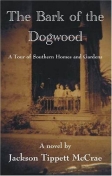BKMT READING GUIDES
The Bark of the Dogwood: A Tour of Southern Homes and Gardens
by Jackson Tippett McCrae
Paperback : 450 pages
1 club reading this now
2 members have read this book
Introduction
Asked to write a series of articles on Southern Homes and Gardens for a New York Magazine, Strekfus Beltzenschmidt (the main character in The Bark of the Dogwood) chooses not only some of the plantations and historic residences the South is known for, but places of his youth, including the home he grew up in and those of his relatives that he visited as a child. The intended articles become in essence, short stories, which then grow into the main character's memoirs about his turbulent and sometimes humorous childhood. The result is not only an ongoing battle with his boss over the magazine's content and direction, but a painful journey into remembering the people and places of his past.
The opening statement of his first story, 'When I was six years old I became locked inside the home of Helen Keller,' is a clue into this insightful book's revelations about how we are all in some way, deaf, dumb, or blind, if not literally, then at least spiritually or emotionally. The stories serve as chapters themselves in the novel, expertly intertwined with the modern day world of publishing in New York--each chapter commenting on the other and linked in ways that only become obvious as the reader digs deeper into the novel.
The Bark of the Dogwood is a dazzling display of virtuosity, combining rollicking humor and insights into human nature with a tale of horror and family secrets surpassing even the most Gothic Southern novel. The end result is a massive undertaking that works on several levels—so many, that it is up to the reader to decide just how deep he wants to delve into the colorful cast of characters whose lives are inextricably intertwined.
Excerpt
The blood was now flowing with regularity, streaming down her brown shins like swift-moving paths of lava. With each kick, the steel toe of his cowboy boot dug deeper into her flesh, tearing dark pieces free from the front of her calves. They stood out from her legs, flaps of skin momentarily colorless, until the blood began to fill up the vacated spaces, seep into the shreds of flesh, and ooze out onto her body. With each attack more blood splattered the stiff white maid’s uniform she was wearing and flew back onto the yoke of his cowboy shirt. She neither cried out nor made an attempt to stop him. ...Discussion Questions
1. Discuss the use of symbols in the book: Helen Keller; Dixie; the references to dogs in the book, including the opening quotation at the beginning of the novel; the feather pen; etc.2. How do the epigrams function at the beginning of each chapter?
3. Who is actually writing the book? Whose voice are you hearing?
4. Why does the main character choose to write about the homes he knew and grew up in as a child rather than the more obvious plantations and mansions of the South? How does this work for him? Against him?
5. This book is actually a “novel within a novel.” How is this writing technique achieved?
6. Discuss the difference in writing styles between the New York portion of the book and the Southern portion.
7. How does the author foreshadow in the New York sections what will be happening in the Southern sections? Discuss the “art imitates life” and “life imitates art” usage in the book. When does this turn from one to the other in the book?
8. Discuss the main character’s views on race, Southern culture, New York, and food. Do you think the main character is racist, liberal, or that he is struggling with his feelings on these and other issues in the book?
9. How many tie-ins can you find to the title? Where does the title come from? Why did the author title the book what he did?
10. Discuss the main character’s inability to communicate with the outside world. How does this manifest itself? How does he overcome it? What final attempt does he make to admit who he is and call things by their rightful names?
11. In chapter one Strekfus relates a story about taking an aptitude test when he was young. How does his rationalization of the answers to this test mirror the form, journey of discovery, and plot of the book?
12. Discuss the use of stereotypes in the novel. How does the author use stereotypes and how do certain characters dispel the myths perpetuated by them?
13. What is the significance of the town name, Infanta, in the book?
14. Discuss the use of religious references throughout the book.
15. Why did Althea perform the heroic feat that she did at the climax of the book? How did she view Strekfus and how did he view her? Would they have had the same relationship in another time and place?
Book Club Recommendations
Recommended to book clubs by 0 of 0 members.
Now serving over 80,000 book clubs & ready to welcome yours. Join us and get the Top Book Club Picks of 2022 (so far).
Get free weekly updates on top club picks, book giveaways, author events and more








